 |
  |
 |
Copyright 2008
40 Fireballs & Discovery of Gamma Ray Bursts |

What's New & Previews
Jimi's Prediction —
A Remote View About Jimi Hendrix Timeline Blog Asteroid Impact Evolution Woodstock Blues Jimi Code VS. Da Vinci Code Credit Thefts Missile Agency/Moon Base Charade Remote View Mutation Seattleland Censorship Events Skewed Science Search Engine Rankings Download An Ad AT&T: New Nuremberg Wall(y)flower Syndrome Rochester Media DVD/CD Store More Links...  
. page 1 of 1
. 40 FIREBALLS SURROUND THE 2004 GAMMA BLAST
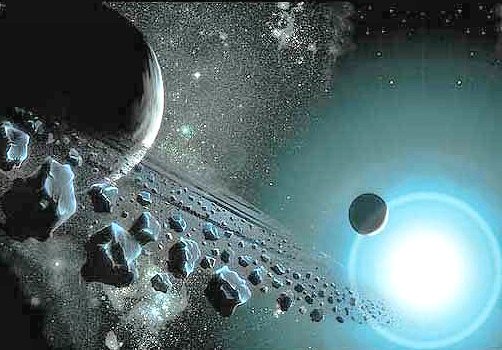 Official records show a spike in meteor, asteroid, and comet sightings preceding and following the gravity wave fronting the great gamma ray burst at Christmas 2004. From mid November 2004, and then following the burst's gravity wave into March, at least 40 known fireballs were reported around the world.
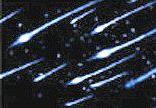  November 19, 2004: A bright blue meteor is seen streaking over central Florida. November 24, 2004: The first photograph of a meteorite hitting Earth is taken at the Fort Hill Wharf near Darwin Cenotaph on the Esplanade in Northern Australia: 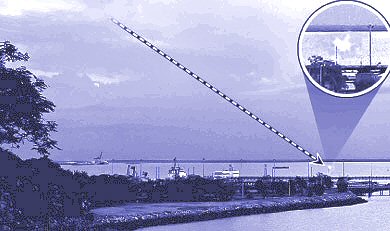  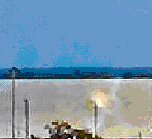
[NOTE: The pictures of webpages below are low resolution, fewer pixels, so the page you're on here loads quicker. The images of these webpage pictures aren't meant to be read here, the pics are here for a quick glance reference while reading our story of the 40 fireballs surrounding the 2004 gamma ray burst. If you want to read the webpages shown, google the keywords the picture refers to and see the online page. We intentionally DO NOT INCLUDE LINKS to these websites because too often sites go offline or take down the page and our site is left with "broken links" to pages no longer online, meaning we have to keep monitoring the links, which is a pain. So instead we made .jpg pics of the pages, in anticipation that eventually the webpages shown will be taken offline. If you try to bring up these sites and the page is gone offline, we keep clear versions of the pages in our archives, which we can email - if you really need the webpage being referenced below.] November 27, 2004: On the 62nd birthday of Jimi Hendrix, a bright blue meteorite crashes into Sri Lank, south of India, creating a crater at Sankabodhi Viharaya in Polonnaruwa:
http://www.dailynews.lk/2004/12/07/new12.html
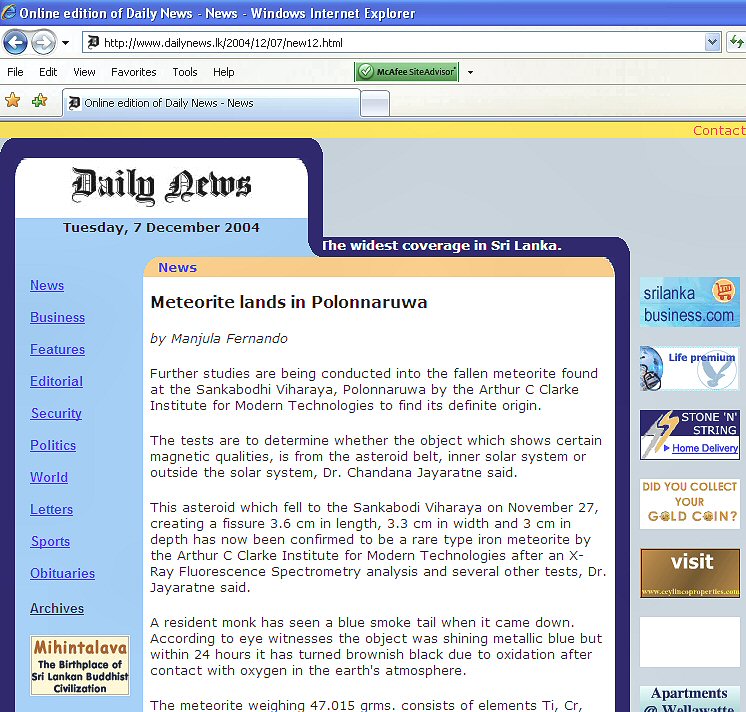 November 30, 2004: A meteor explodes in the atmosphere over Covington County, Florida, making a sound described by one resident as "a very loud shaking noise." December 3, 2004: A meteor blows up over Richmond, Virginia making a loud boom, while media in New Hampshire and Massachusetts report streaking bright lights in the sky as windows rattle from sonic booms. December 6, 2004: A large bright meteor, trailing a greenish-blue hue, is seen streaking across the northern coast of New South Wales in Australian before exploding in a series of bright flashes with the force of 1000 tonnes of TNT, shaking people from their sleep and lighting up the sky. A low rumbling sound accompanied the explosions.
http://www.hohmanntransfer.com/mn/0412/stak1.htm 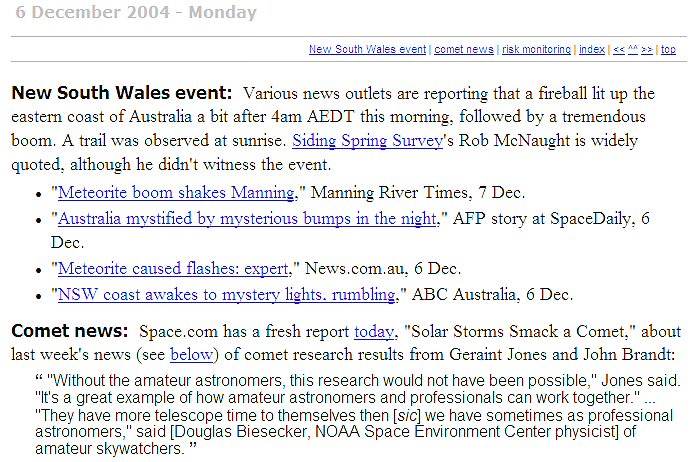 http://www.smh.com.au/articles/2004/ 12/06/1102182230350.html 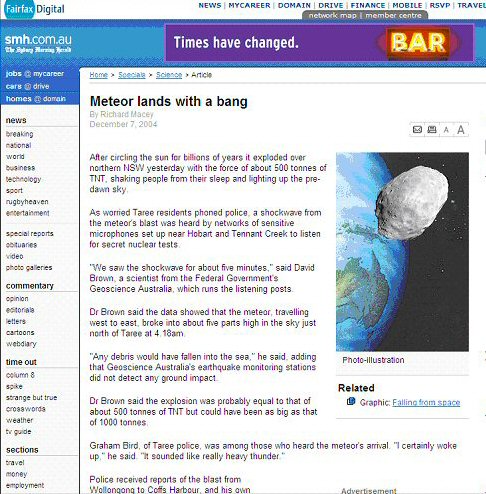 ROCK # 10: December 8, 2004: Asteroid 2004 RZ164 makes a near-Earth flyby at 1.5 million miles. Its diameter is about 700 meters (2296 ft.).
 December 9, 2004: A meteor explodes over Saginaw, Michigan, shaking the homes below. December 10, 2004: Residents in a 20 mile radius around south Houston, Texas are shaken by a rock bursting in the sky.
December 11, 2004: Across Baltimore County and Washington D.C., residents report "a bright ball of fire falling out of the sky."
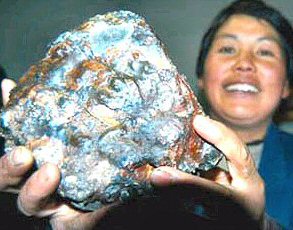 December 11, 2004: A meteor is seen lighting up the sky across the north-western Chinese city of Lanzhou in Gansu Province. It explodes in the suburbs. More than 700 witnesses describe two bright trails of light, and a fireball with a tail of about three meters, darting across the sky. The ground tremble was felt within 100 square km around Lanzhou. A woman shows a piece of meteorite dropped to Earth after the explosion in Gansu Province. December 14, 2004: People in Salt Lake City, Utah witness a glowing rock streak across the sky and crash to Earth.
December 15, 2004: A flaming rock over the ocean and loud blast in the atmosphere is reported along the cost of the Carolinas. December 16, 2004: The U.S. Missile Defense program, secretly designed to try and hit asteroids, fails another $85 million test. December 19, 2004: Asteroid 2004 YD5 passes Earth BENEATH the orbits of satellites. The rock went undetected until three days later. It is the second closest pass of an asteroid ever observed by telescope. The closest pass was made by a rock that flew by a few months earlier.
httpS://www.space.com/scienceastronomy/asteroid_close_041222.html
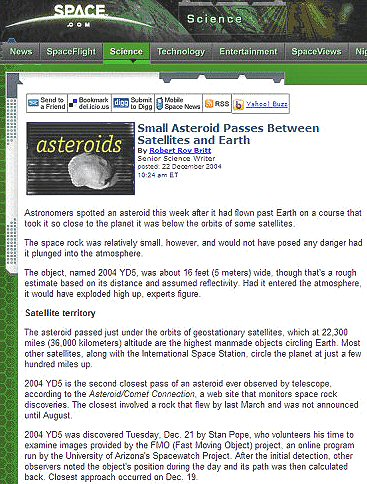 December 19, 2004: On the same day that Asteroid 2004 YD5 narrowly misses Earth, a large meteor is seen by thousands as it streaks Indonesian over Jakarta. In daylight the white fireball is as bright as the Sun before it explodes in the atmosphere.
http://news.bbc.co.uk/1/hi/world/asia-pacific/4108697.stm
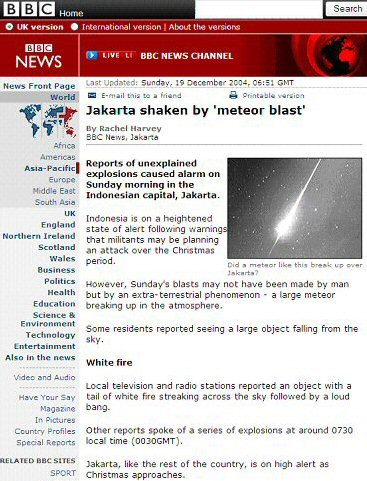
December 19, 2004: A comment posted at fireballs-meteorites.blogspot.com notes: "So our planet is being rained on by meteorites; big deal, right? Shut out those annoying streaks in the sky and loud booms that are happening with alarming frequency all over the planet, and go back to the concerns of our little lives." ROCK # 20: December 21, 2004: Sonic explosions in the sky cause the ground to shake as windows rattle in north Wales and northwest England. In the past five weeks twenty rocks from space have been seen around the world, reported and recorded in publications. Although highly unusual, the sightings prove to be mere foreshadows of an incredible event yet ahead. December 23, 2004: Pravda in Russia nervously jests, "Meteor showers to devastate planet Earth…Reports about meteorites appearing in the sky of planet Earth have become much more frequent indeed…Experts do not know why incidents with meteorites have become so frequent."
http://english.pravda.ru/science/19/94/378/14754_asteroid.html
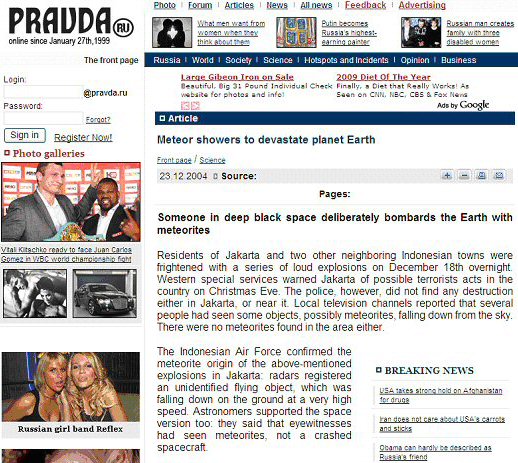 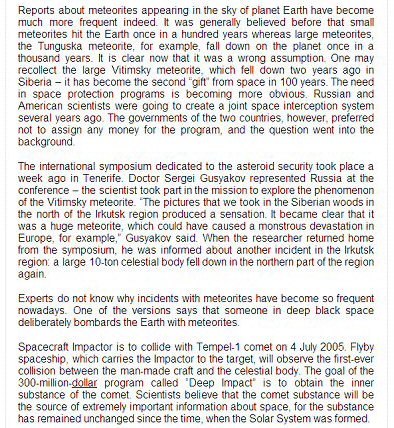 December 24, 2004: Asteroid 2004 VW14, a rock 800 meters (2625 feet) wide, makes a near-Earth fly-by at just over a million miles (2 million km).
Is it a bird? Is it a plane? A rock? Or a neutron star's single atom? 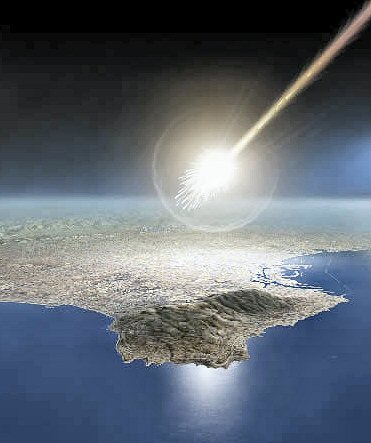 December 25, 2004: During Christmas in America a massive splash in the Indian Ocean triggers the deadly tsunami that wipes out 300,000 people. Was the wave caused by an asteroid? or a tiny fragment of the neutron star that flashed a gamma blast at us? as suggested by The Single Atom Theory. ROCK # 22: December 30, 2004: The swarm of space rocks sucked along by the gravity wave continues to bombard Earth as a meteorite crashes into a house in Iran, in the southeastern town of Saravan in Sistan-Baluchestan province.
January 3, 2005: A green meteor is seen streaking over Fremont California, while a white one is spotted over Portland, Oregon. January 4, 2005: Meteors are reported over San Diego in southern California and Duluth, Minnesota. http://www.amsmeteors.org/fireball/fireball_log.html January 5, 2005: Newly discovered Comet Machholz passes Earth close enough to be seen by the naked eye. On the same day, authorities in north central Wisconsin blame "meteor activity" for dozens of reports of lights streaking through the skies, with sonic explosions. ROCK # 29: January 7, 2005: "Juneau residents saw a fiery ball traversing the sky," reports media about a meteor blazing over Alaska. http://www.kinyradio.com/juneaunews/archives/week_of_01-01-07/juneau_news_01-04-07.html
  January 8, 2005: A green meteor is seen over Norman OK, while an orange one streaks above Casper Wyoming. http://www.amsmeteors.org/fireball/fireball_log.html' ROCK # 32: January 11, 2005: A huge fireball explodes in the district of Maharashtra near Mumbai India. Geologists and astronomers rush to Vavoshi, near Pen in Raigad district, where pieces of the meteor fall. Newspapers report, "The Astronomical Study and Research Centre…said it appears to be an explosion due to collision of an asteroid with Earth's surface, and the impact was felt over a radius of 50 km." January 14, 2005: Yellow meteors are reported over Santa Barbara, California and Tallahassee, Florida, while a green one is seen over Barker Reservoir in Colorado. http://www.amsmeteors.org/fireball/fireball_log.html Also on this day, a flaming rock is spotted south of Liverpool in the western England city of Wrexham. "It was a ball moving across the sky, under the cloud cover," said Paul Davies of Rhosddu. "It went across the sky with this fabulous bright blue trail behind it. It had a very short trail and looked intensely hot." ROCK # 37: January 26, 2005: Reuters: "A meteorite which landed in a former Khmer Rouge zone of northwest Cambodia started fires across rice fields…'It destroyed several hundred hectares of paddy fields,' said Sok Sareth, police chief of Banteay Meanchey. 'It came quickly from the sky and made a noise like a bomb exploding.'" January 27, 2005: AP: "A spectacular fireball meteor fell from the sky before falling in a neighborhood near Madrid airport…An enormous, incandescent and very red ball gave a tremendous flash." February 20, 2005: A bright daylight fireball is seen by thousands in southern England from Essex to Cornwall, the Bristol area, and south Wales. The meteor flew north up the Irish Sea coast to the west of Wales. Ray Stuart of Theale painted this artist's impression of his sighting: 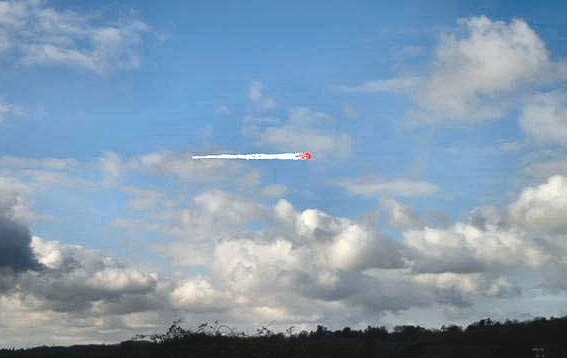 MARCH 12, 2005: Seattle, Washington, hometown of Jimi Hendrix, experiences a 3.3 magnitude earthquake just as a meteor buzzes over the city and electrical power goes out. Local media rushes into spin mode and tells residents that these simultaneous events are not related.
http://seattlepi.nwsource.com/local/215845_outage14.html
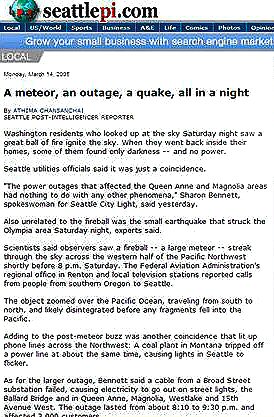
HISTORY OF GAMMA RAY BURST DISCOVERY:
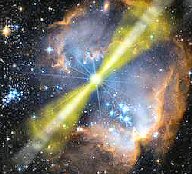 1967: July 2, 1967 the Vela 4 satellite picks up gamma rays that no nuclear bomb could have made. The rays came from outer space. Gamma Ray Bursts remained a perplexing mystery for nearly 30 years more, until 2005… 1969: May 23, 1969, while looking back over data from Vela 4, just prior to the launch of Vela 5, Ray Klebesadel and Roy Olsen find the event recorded by Vela 4 on July 2, 1967. Klebesadel notes that this discovery represents the "first observed gamma-ray burst." No earlier observation of a similar event is known. The following day, Jimi Hendrix starts talking about "a change in the solar system" due to hit Earth "in about 30 years" after 1969. 1972: Ian Strong, at Los Alamos, was asked to look at Ray Klebesadel's files of the Vela satellite gamma-ray detections. With the timing accuracy of the later Vela satellites [after July 1972 observations] Klebesadel and Strong, along with another Los Alamos colleague, Roy Olson, were able to deduce the directions to the events with sufficient accuracy to rule out the Sun and Earth as sources. They concluded that the gamma-rays were "of cosmic origin" - arriving near Earth from outer space. 1973: March 16, 1973: The article "OBSERVATIONS OF GAMMA-RAY BURSTS OF COSMIC ORIGINS" by Ray W. Klebesadel, Ian B. Strong, and Roy A. Olsen is submitted to The American Astronomical Society for publication in the June 1973 edition of The Astronomical Journal: "Sixteen short bursts have been observed between July 1969 and July 1972…made by detectors on the four Vela spacecraft…Directional information eliminates the Earth and Sun as sources…Inverse-square law considerations thereby place the sources at a distance of at lease 10 orbit diameters, or several million kilometers." 1979: The discovery of "soft gamma repeater" bursts - flashes of highly energetic X-rays and low-energy (soft) gamma rays coming repeatedly from one place in the sky - were first noticed in 1979 and remained a mystery. 1991: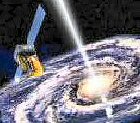 1997: In 1997 the Dutch-Italian satellite called Beppo-Saxit was the first to zero-in on a precise position for a Gamma Ray Burst. It was a distance of several billion light years away. The typical distances Beppo-Saxit measured were 8 billion light years away, half-way across the visible universe. These really were the most violent phenomena in the universe, a burst so powerful that for a few seconds it explodes with the energy equal to all the other stars in the universe combined!
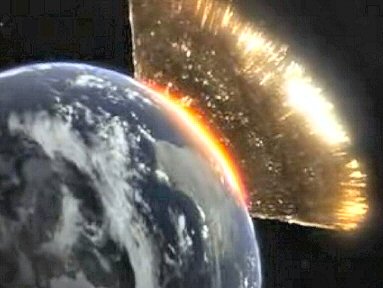 Gamma Rays from these explosions are coming out in beams of jets, and not in all directions at the same time, they are intense energy beams and it means we only see GRBs aimed directly at us. There are far more that we never see. For every one we see there's about 300 that shoot off in another direction, the guns are pointed somewhere else besides our head and we don't see them. So there're about 300,000 Gamma Ray Bursts per year in the universe, that's about one every 100 seconds. "If one went off in our own neighborhood, let's say in our own galaxy, it could have a serious effect on our Earth and atmosphere. Short Gamma Ray Bursts come from processes that take place in our own galaxy, where the Earth can't possibly avoid them. The short GRBs are thought to be produced by the merger of neutron stars. The problem for Earth is that the Milky Way has many such stars." - Mega Disasters History Channel 2006 Stan Woosley, astrophysicist, Univ. of CA Santa Cruz: "We do know of cases in the Milky Way where there are neutron stars that someday will come together, so, unlike the other kind of GRBs, we can predict with some certainty that something like that will happen in the lifetime of the Milky Way." [NOTE: THIS IS WHY THE DEC. 27, 2004 BLAST IS LEFT OUT OF MOGUL MEDIA PROGRAMS ABOUT GRBs: As Woosley says, "We can predict with some certainty that [Short GRBs] will happen in the Milky Way." They know how long we have until the next flash, and they have a timetable for building a Moon colony escape haven.] 2003: On March 29, 2003 a gamma ray came from a galaxy close enough to finally be measured in detail. There is evidence for supernova/gamma ray burst association. A large star burns out all of it's nuclear fuel and collapses in on itself, forming an ultra dense neutron star, in the process it blows off its outer envelop in a spectacular display, the biggest, brightest bombs since the Big Bang itself. The eruptions can last anywhere from 2 to 100 seconds. Stan Woosley, astrophysicist, Univ. of CA Santa Cruz: "If it happens 6000 light years away [from Earth] it will cause a mass extinction. At 1000 light years away it'd be like standing a couple miles from an atom bomb, everywhere on the surface of the Earth. Within 100 light years of us, then things get very, very bad. It blows away the atmosphere, creates tidal waves, it starts to melt the surface of the Earth." The closest star to our solar system is 4.2 light years away. Within 6000 light years of Earth there are literally millions of stars. If Alpha Centauri (the closest star to us) erupted, it would incinerate the Earth. It could happen at any time. There are two kinds of Gamma Ray Bursts: the long duration gamma ray bursts and the short duration gamma ray bursts. The dividing line is about 2 seconds. Short bursts last less than 2 seconds, like a massive flashbulb popping off, some of them are as short as the wink of an eye.
Short bursts have little to do with super massive stars, they come from processes that take place in our own galaxy, where the Earth can't possibly avoid them.
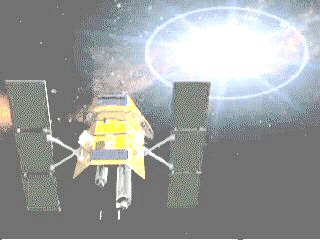 Swift - Quick to Catch a Blast The Swift spacecraft was launched on Nov. 20, 2004 and activated just a week prior to the Great Gamma Flash that caused the Asteroid Tsunami in the Indian Ocean (Dec. 2004). Swift is designed to switch directions quickly in flight in order to catch and measure Short Gamma Bursts. For nearly a decade astronomers were able to see only long gamma ray bursts, those lasting from 2 to 100 seconds. Short Gamma Ray Bursts remained a puzzle because they were over before satellites could maneuver to calculate their position. Swift changed everything because it can re-position itself in seconds whenever a burst is detected. http://www.nasa.gov/centers/goddard/universe/swift_nsu_0205.html By the late 1990s it became clear that gamma-ray bursts did originate very far away and that Short Gamma Rays were a different phenomenon. But the extraordinary giant flare on December 27, 2004 reopens the debate. A sizeable percentage of "short" gamma-ray bursts come from galaxies within 100 million light years from Earth. 2005: "In the summer of 2005," recalls astrophysicist Stan Woosley, "we finally got a short gamma ray burst and made the discovery we'd been waiting for. The Short GRBs are thought to be produced by the merger of neutron stars. But for neutron stars as the cause of Short Gamma Ray Bursts, the problem for Earth is that the Milky Way has many such stars." This is what drives today's race for a Moon base: WE ARE SURROUNDED BY DEADLY NEUTRON STARS AND ODDS ARE ONE WILL ZAP US WITH GAMMA RAYS. The Moon offers a chance of survival becuase it doesn't rotate. If human colonies exist on opposite sides of the Moon, just one of the bases would perish from a nearby GRB.
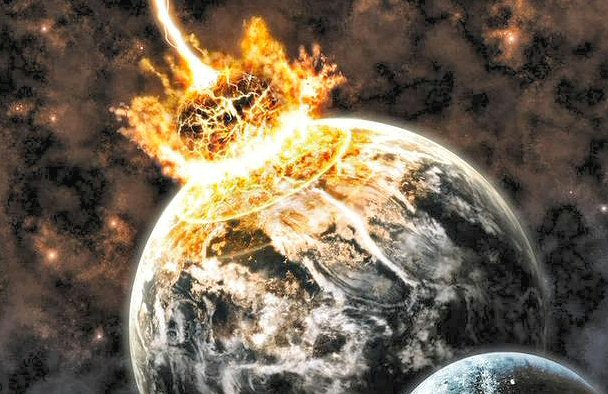 2009: In March 2009 Space.com reports: "A massive star…exploded way too early in its life, suggesting scientists don't understand stellar evolution as well as they thought. 'This might mean that we are fundamentally wrong about the evolution of stars, and that theories need revising,' said Avishay Gal-Yam of the Weizmann Institute of Science in Rehovot, Israel. 'This also leaves open the question that there may be other mechanisms for triggering supernova explosions. We may be missing something very basic in understanding how a super luminous star goes through mass loss,' says Gal-Yam. "'The evolution of the core, and the evolution of the envelope [of stars], are less coupled than previously thought, a finding which may require a revision of stellar evolution theory,' said study co-author Douglas Leonard from San Diego State University. "The unexpected explosion could mean other stars may behave in ways not previously expected, including one relatively close to home, known as Eta Carinae, just 7,500 light-years away and in our own Milky Way galaxy…massive and luminous stars…such as Eta Carinae, are expected to lose their entire hydrogen envelopes prior to their ultimate explosions as supernovae. 'We should continue to keep an eye on Eta Carinae,' said Mario Livio of the Space Telescope Science Institute in Baltimore, 'it may surprise us.'" On April 23, 2009 the Swift satellite detected the largest, oldest, and most distant object ever seen in the universe, a Gamma Ray Burst 13.1 billion light years away from Earth. The fantasic blast happened when the universe was just 630 million years old, making it the oldest object ever seen. The explosion lasted for ten seconds, producing the highest red-shift (furthest distance from Earth) ever measured. With a mass of 40 billion Suns, it was half as big as the entire Milky Way. Astronomers almost overlooked the blob among 207 galaxy candidates, while sweeping a portion of the sky to date random samples. "We thought it was a foreground interloper contaminating our galaxy samples," said researcher Masami Ouchi, "but we tried anyway." The GRB blob was named Himiko, after an ancient Japanese queen with a murky past (like the evil Dragon Lady who today controls the estate of Hendrix and daily destroys Jimi's legacy - at the behest of even eviler EMPeror Paul Allen). On May 8, 2009 the journal Physical Review Letters published research by physicist Charles Horowitz that describes how explosions from nuetron stars, such as the one that caused the Dec. 27, 2004 Gamma Ray Burst that hit Earth, require the star to have a "super strong crust" - 10 billion times stronger than steel. Forces welling up from within the star crack the crust during "star quakes" (similar to earthquakes). The intense power of those quakes blast gamma rays out in jets through the crack and into space. Neutron stars are so dense that if you could dip a teaspoon into one of them and scoop out some neutrons, the spoon would weigh 100 million tons.
The Single Atom Theory
When the Horowitz research was reported at Space.com in May 2009, a reader posted a comment to the article and asked, "Can an outburst carry crust fragments with it to an escape velocity?...could the rapid expansion of the material, embedded in the flash of the GRB, further fuel the GRB?" This scenario poses the possibility that what struck Earth in Dec. 2004, as part of the Gamma Ray Burst forefront gravity wave, may have been just a bit of the star crust itself, a small "spoonful", a single atom, that weighed a million tons and hit the ocean, a crumb from the crust of the neutron star that blew a blast at us from the constellation Sagittarius (Jimi's birth sign)...
"The solar system is going through a change soon and it's going to affect the Earth itself.
This room is just a crumb from the crust of the pie, and there's no moving from any one land to another to save yourself in that respect." - Jimi Hendrix
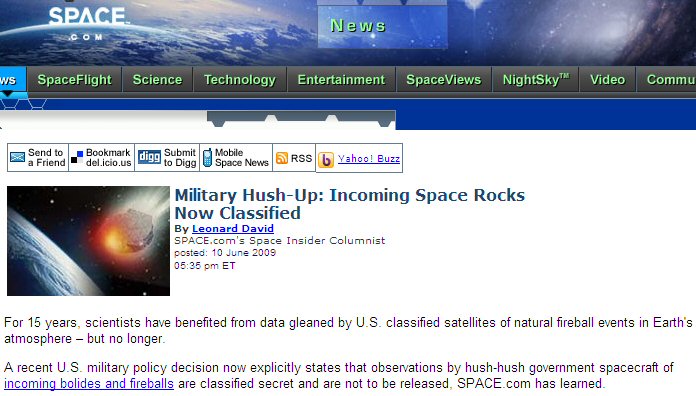 On June 10, 2009 a Space.com article titled "Military Hush-Up" reported: "Incoming Space Rocks Now Classified - Scientists have benefited from data gleaned by U.S. satellites of natural fireball events [meteors] in Earth's atmosphere - but no longer. A recent U.S. military policy decision now explicitly states that observations by government spacecraft of incoming bodies and fireballs are classified secret and are not to be released. Scientists say not only will research into the threat from space be hampered, but public understanding…will be diminished…Where the space-based surveillance truly shines is over remote stretches of ocean…But all that ended within the last few months, leaving scientists blind-sided and miffed by the shift in policy. Scientists want to know about these events so they can better predict the risk here on Earth. 'Fireball data together with astronomical observations of larger near-Earth asteroids define the nature of the impact hazard and allow rational planning to deal with this issue,' said David Morrison a Near Earth Object (NEO) scientist at NASA's Ames Research Center, 'so it's ironic that the availability of these fireball data should be curtailed just at the time the NEO program is moving toward surveying the smaller impactors that are most likely to be picked up in the monitoring program. These data have been available to the scientific community. It's unfortunate this information is now shut off just when it's becoming more valuable to the community interested in characterizing near Earth asteroids and protecting our planet from asteroid impacts.'" - Space.com, June 2009 A commentary posted at the end of this Space.com report notes, "Makes me wonder if the Military knows about a large body that is headed our way and they want to keep it a secret? Seems like they're forgetting who's paying the bills." So, WHY has the Pentagon declared a blackout of news about asteroids, comets, solar plasma balls, or gamma ray bursts headed for Earth? And who in the administration made the decision? Is it Robert Gates or Obama? Notice how the entire corporate global news networks have united in NOT REPORTING news of the blackout. The leak to Space.com appears like a last desperate attempt of whistle blowers to alert us, and unless we happen to have seen the report on Space.com we wouldn't know. .
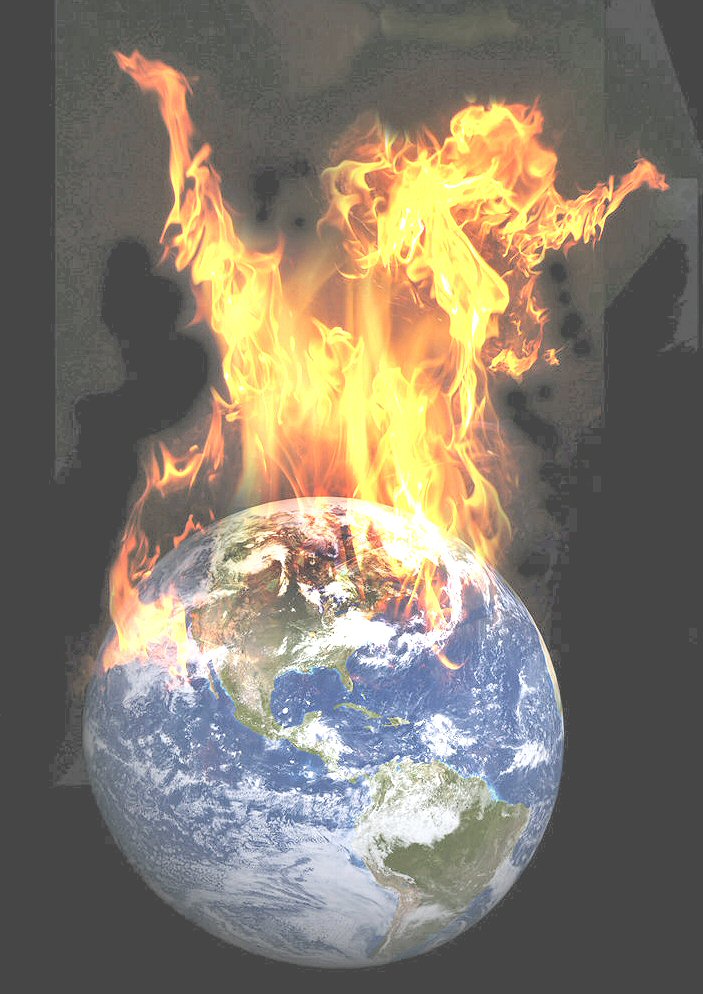
Below are links to EIGHT EDITS for the SAME STORY of Tsunami Asteroid's Gamma Blast. Edit versions get successively longer and contain more details than their prior versions. Decide how much time you have to read and select an edit to fit your schedule. If you have just a couple minutes, check out the "Quickest Gist Of It" edit. If you have a couple hours, see the "Full Details" version, etc.
Quickest Gist Of It - 15 Bullet Points
12 paragraphs Brief Press Release
17 paragraphs Medium Press Release
22 paragraphs Full Press Release
36 paragraphs Synopsis
1 page Overview
2 page Lecture / Film Script
4 page Full Details
The Single Atom Theory
. Return to Homepage
|
| © 2008 First Century Press. All Rights Reserved. Contact Us |
